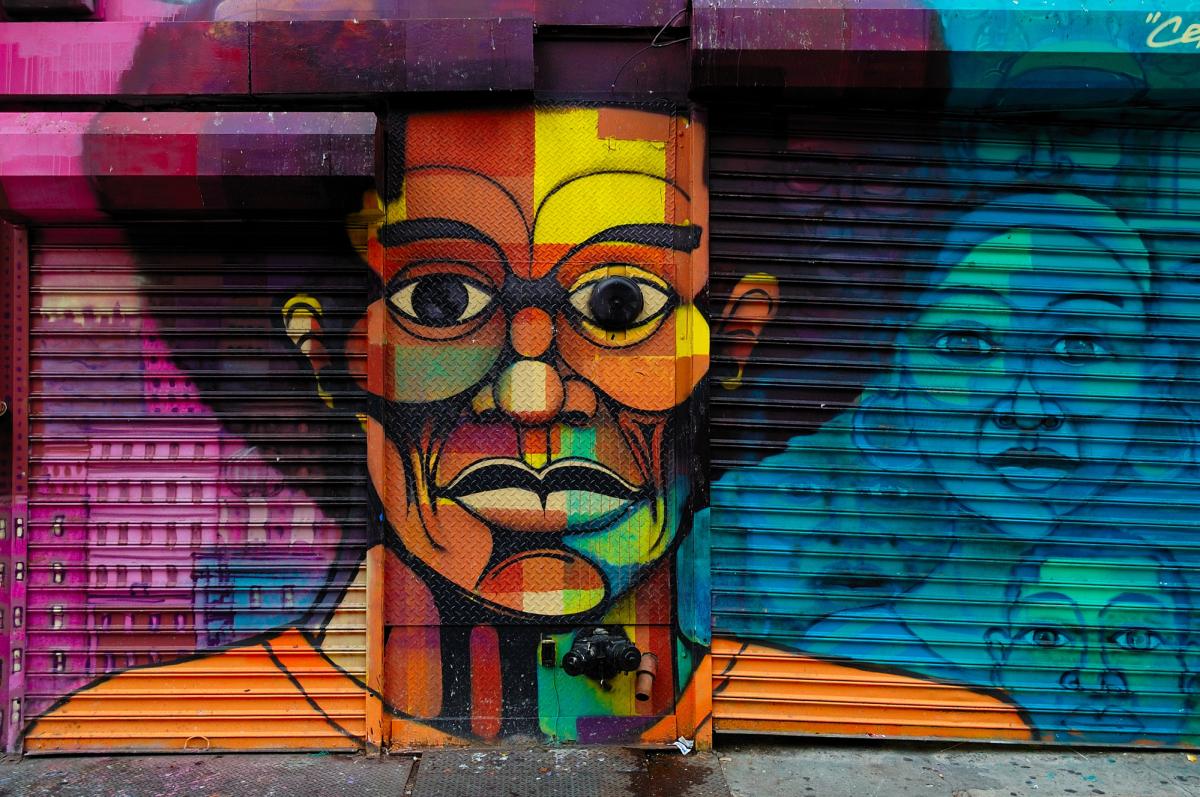Names like Eduardo Kobra, Criola, Filite and Cranio are recognized in several countries and have arts spread throughout Brazil
Art is everywhere, and what we call “urban art” only reinforces that even the gray streets of the big city can become the stage for beautiful works.
There are artists who dedicate themselves specifically to this category of Street art and its manifestations are equally diverse, including the famous graffiti, posters (also known as lambe-lambe), sculptures, facilities and much more.
In this regard, Brazil has some big names, featuring a wide variety of internationally renowned street artists. Many of them have works spread across different Brazilian urban centers., in addition to expanding their borders to other countries – with emphasis on the United States, where the culture of urban art it's very strong.
Just like any artistic manifestation, Each of them has their own style and usually conveys a different message in their works., which may vary between contemporary themes, social critics, etc.
Below, We have put together a list of some of the main Brazilian street artists, telling us a little more about his work and where it can be found. Check:
Eduardo Kobra
Kobra is one of the greatest muralists in Brazil and built his fame on the basis of beautiful, large-scale graffiti, often contemplating walls and gigantic walls.
Born on the outskirts of São Paulo, Kobra has always used the art to manifest their ideals and pay tribute to artists and famous figures who fought for world peace.
Eduardo holds the record for the largest graffiti in the world with his work “Povos Nativos dos 5 Continents”, carried out on a mural in Rio de Janeiro for the Olympic Games in 2016; the mural has 15 meters height and 170 meters wide, representing individuals of diverse ethnicities and nationalities.
Another notable work was a mural made in honor of singer David Bowie, in Jersey City, in the United States. The graffiti was painted over 18 floors of a building, having almost 60 meters of height; It is one of his most prestigious works around the world.
Criola
Criola is the artistic name of Tainá Lima, a young woman who came from the outskirts of Belo Horizonte, Minas Gerais.
The artist was also famous for her large murals., but more precisely through the explicit activism in his works, always focusing on black women and Brazilian diversity.
Although almost all of his works illustrate black women,, the message goes far beyond racial and gender equality, also carrying various elements that represent our indigenous heritages, African and religious.
One of his most famous works is the mural ‘The Ancestral of the Future’, which pays homage to the writer Carolina Maria de Jesus, on the side of a building on the corner of Paulista and Consolação, in São Paulo.
Most of Criola's works are on the streets of Belo Horizonte, his hometown and the place where he still lives. Besides Brazil, He has also exhibited his art in countries such as the United States, France and Belarus.
Filite
Born in San Carlos, in São Paulo, Filite is a visual artist who mixes street graffiti with Italian Renaissance paintings, creating very authentic and impressive works.
Sign up to receive Event News
and the Universe of Arts first!
Since small, He already had artistic influences in his family and learned to love art thanks to his grandfather, who also painted and sculpted.
Most of Filite's works depict faces and butterflies, two of its main symbolic elements. Your graffiti has a more realistic look, and, in addition to sprays, he is also famous for using other materials such as charcoal and acrylic paint.
The artist has murals in several places in Brazil, but its main activity is on social media, where he exposes his entire creative process and shows his followers how art is present in practically every aspect of our daily lives.
An excellent reference for those who intend to study visual arts, degree or bachelor's degree.
Cranio
Cranio, artistic name of Fabio de Oliveira Parnaiba, He is one of the best-known graffiti artists in Brazil, both for its time in activity and for its very authentic style.
Native to the north of São Paulo, the artist already accumulates more than 20 years of experience, with graffiti spread in various places in the capital of São Paulo.
The central focus of Cranio's art is indigenous peoples, which are portrayed in each of his works, mixing styles such as surrealism,, cartoon and pop culture elements.
The objective is to represent Brazilian identity while making some social criticisms, generally related to consumerism and environmental preservation.
Due to the authenticity of his works, It's hard not to recognize Cranio's graffiti on the streets of São Paulo, just look for the blue-colored indigenous people. His work is also recognized worldwide, owning galleries in France, United States and United Kingdom.

Text prepared by the Conversion team.
